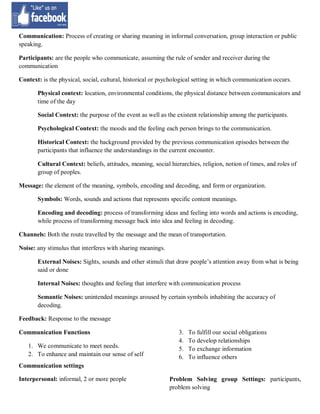The document discusses the key components and principles of communication. It defines communication as the process of creating or sharing meaning through conversation, group interaction, or public speaking. It notes that communication involves participants who take on sender and receiver roles, occurs within a context including physical, social, cultural and psychological factors, and involves the transmission of a message through various channels that can be impacted by noise. Feedback from the receiver in response to the message is also an important part of the communication process. The document outlines several principles of communication, including that it has purpose, is continuous, can vary in how consciously it is encoded, is relational, is culturally bound, and has ethical implications.


